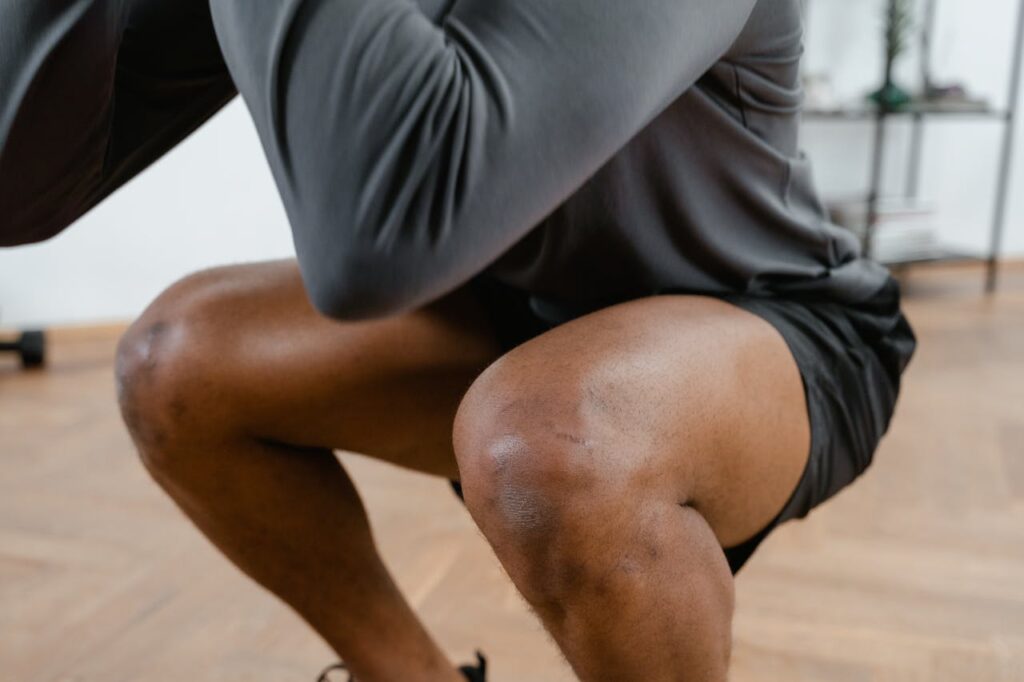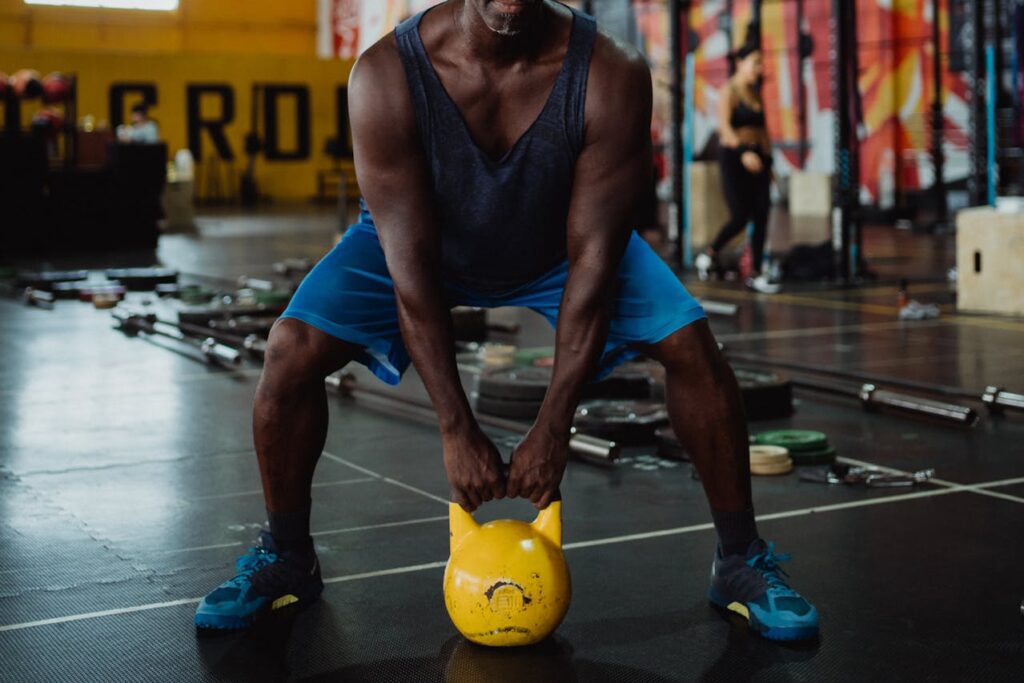In this article, we explore the fundamentals of a squat exercise.
Table of Content:
Squats are one of the most fundamental and effective exercises in the world of fitness. Whether you’re a seasoned athlete or a gym newbie, incorporating squats into your workout routine can yield significant benefits for your overall strength, mobility, and health. This article explores the mechanics, benefits, variations, and common mistakes associated with squats, providing you with the knowledge to make the most out of this powerful exercise.
Understanding the Squat
At its core, a squat is a compound, full-body exercise that primarily targets the muscles of the lower body, including the quadriceps, hamstrings, glutes, and calves. It also engages the core and back muscles, making it a highly effective exercise for building overall strength and stability.
How to do Squats?

To perform a basic squat:
- Starting Position: Stand with your feet shoulder-width apart, toes slightly turned out. Your chest should be up, shoulders back, and your core engaged.
- Descent: Begin by pushing your hips back as if you’re sitting into a chair. Bend your knees and lower your body, keeping your chest up and your weight on your heels.
- Depth: Aim to lower yourself until your thighs are parallel to the ground, or lower if your mobility allows. Ensure your knees track over your toes and do not collapse inward.
- Ascent: Push through your heels to return to the starting position, extending your hips and knees simultaneously.
Benefits of Squats
Squats offer a myriad of benefits that go beyond just building muscle. Here are some key advantages:
1. Strength and Muscle Development
Squats primarily target the muscles of the lower body, but they also engage the core, back, and even the upper body to a certain extent. This makes them excellent for developing overall strength and muscle mass.
2. Improved Mobility and Flexibility
Regularly performing squats can enhance the mobility and flexibility of your hips, knees, and ankles. This is particularly beneficial for maintaining a healthy range of motion and preventing injuries.
3. Enhanced Athletic Performance
Squats are fundamental for improving athletic performance. They enhance power, speed, and agility, making them a staple in the training regimens of athletes from various sports.
4. Functional Fitness
Squats mimic everyday movements such as sitting down and standing up, making them essential for functional fitness. They help improve your ability to perform daily activities with ease and efficiency.
5. Core Strength and Stability
The core plays a crucial role in stabilizing your body during a squat. Regularly performing squats can lead to a stronger core, which is vital for maintaining balance and preventing lower back pain.
Types of Squats
There are numerous squat variations, each offering unique benefits and targeting different muscle groups. Here are a few popular ones:

1. Goblet Squat
Performed by holding a dumbbell or kettlebell close to your chest, the goblet squat emphasizes the quads and is excellent for beginners due to its simplicity and ease of maintaining proper form.
2. Front Squat
With the barbell positioned on the front of your shoulders, front squats shift the emphasis to the quads and upper back. They require significant core strength and mobility.
3. Back Squat
The traditional barbell back squat is performed with the barbell resting on your upper back. It targets the posterior chain (glutes, hamstrings, lower back) more intensely and allows for lifting heavier weights.
4. Bulgarian Split Squat
This single-leg variation involves placing one foot behind you on an elevated surface while performing a squat on the front leg. It enhances balance, stability, and unilateral strength.
5. Sumo Squat
With a wider stance and toes pointed out, the sumo squat targets the inner thighs and glutes. It is particularly beneficial for improving hip mobility.
Common Mistakes and How to Avoid Them
While squats are highly effective, performing them incorrectly can lead to injuries. Here are some common mistakes and tips on how to avoid them:
1. Knees Caving Inward
Ensure your knees track over your toes throughout the movement. Strengthen your glutes and focus on proper form to prevent this issue.
2. Heels Lifting Off the Ground
Keep your weight on your heels to maintain balance and engage the correct muscles. Practicing ankle mobility exercises can help.
3. Leaning Forward
Maintain an upright torso to avoid putting unnecessary stress on your lower back. Strengthening your core and improving your hip mobility can assist with this.
4. Shallow Squats
Lowering yourself only partially reduces the effectiveness of the squat. Aim to reach at least parallel depth to fully engage the target muscles.
5. Improper Breathing
Breathe in as you descend and exhale as you ascend. Proper breathing helps maintain core stability and overall control.
Conclusion
Squats are a cornerstone exercise in any effective fitness routine. Their ability to build strength, improve mobility, enhance athletic performance, and support functional fitness makes them invaluable. By understanding the mechanics, benefits, variations, and common mistakes, you can maximize the effectiveness of your squats and enjoy the myriad benefits they offer. Whether you’re lifting heavy weights or just starting with bodyweight squats, this versatile exercise can help you achieve your fitness goals and improve your overall health.


